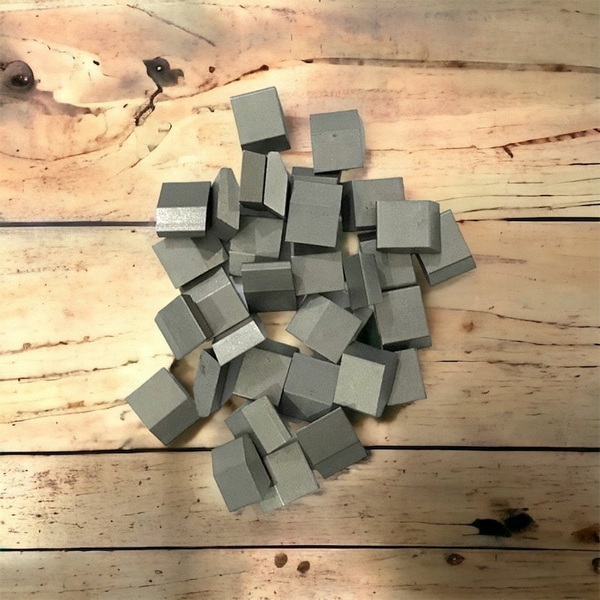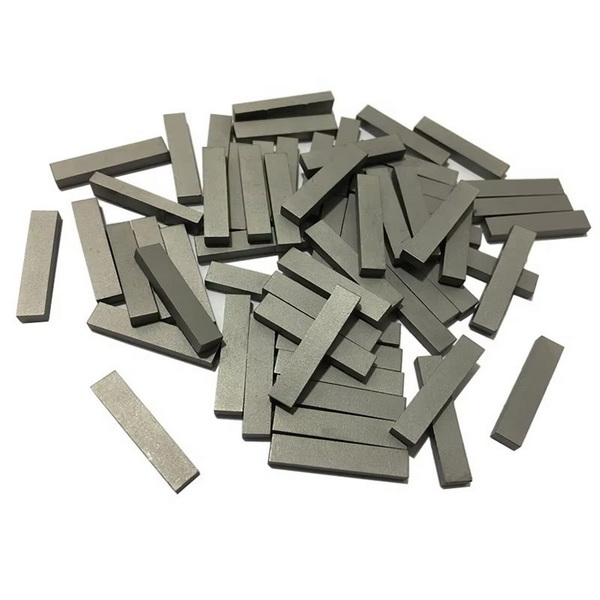Content Menu
● Introduction to Graded Tungsten Carbide
>> Structural Design Principles
● Advanced Sintering Methodologies
>> 1. Multi-Stage Thermal Gradient Sintering
>> 2. Grain Growth Inhibition Techniques
● Industrial Implementation Case Studies
>> Mining Tool Application (Kennametal)
>> Automotive Brake System (BMW)
● Quality Assurance Protocols
>> Non-Destructive Testing (NDT) Methods
● Conclusion
● FAQs
>> 1. What is the maximum operating temperature for graded WC-Co tools?
>> 2. How does cobalt gradient depth affect tool performance?
>> 3. What sintering atmosphere prevents decarburization?
>> 4. Can recycled WC powder be used for graded components?
>> 5. What is the cost comparison between SPS and conventional sintering?
● Citations:
Graded tungsten carbide (WC-Co) represents a breakthrough in material engineering, offering a unique combination of surface hardness (2,000–2,500 HV) and core toughness (15–20 MPa√m). This 2,300-word guide explores advanced sintering techniques, critical process parameters, industrial applications, and future innovations for manufacturing functionally graded tungsten carbide (FGM-WC).

Introduction to Graded Tungsten Carbide
Structural Design Principles
Functionally graded tungsten carbide achieves _spatial cobalt gradient_ through controlled sintering dynamics:
- Surface Layer: 3–6% cobalt binder → 92–94% WC density (HV ≥2,300)
- Transition Zone: 8–10% cobalt → Acts as ductility buffer (KIC ≈12 MPa√m)
- Core Region: 12–15% cobalt → High fracture toughness (KIC ≥18 MPa√m)
Performance Comparison:
| Parameter | Range | Effect on Microstructure |
| Pulse Frequency | 50–100 Hz | Controls grain nucleation |
| Axial Pressure | 30–50 MPa | Eliminates residual pores |
| Temperature Gradient | 50–80°C/mm | Directs cobalt migration |
Advanced Sintering Methodologies
1. Multi-Stage Thermal Gradient Sintering
Developed by Sandvik Coromant, this three-phase process creates 0.5–1.2 mm functional gradients:
- Temperature profile: 1,150°C (±10°C) for 90–120 minutes
- Atmosphere: Hydrogen (dew point 2 gas analysis
Phase Stability Chart:
| Carbon Content (wt%) | Phase Composition | Mechanical Impact |
| <5.8 | Co<sub>3</sub>W<sub>3</sub>C (eta phase) | Brittle fracture at 50% strain |
| 6.0–6.2 | WC + γ-Co | Optimal strength-toughness balance |
| >6.3 | Free carbon + WC | 15% hardness reduction |
2. Grain Growth Inhibition Techniques
Advanced additive formulations for submicron structures:
Effective Grain Inhibitors:
| Additive | Concentration (wt%) | Inhibition Efficiency |
| VC | 0.3–0.5 | 85% grain growth reduction |
| Cr<sub>3</sub>C<sub>2</sub> | 0.8–1.2 | 70% reduction + corrosion resistance |
| TaC | 1.5–2.0 | 90% reduction + thermal stability |
Industrial Implementation Case Studies
Mining Tool Application (Kennametal)
Component: Rotary drill bits for granite excavation
Performance Metrics:
- Operational lifespan: 400 hours vs 280 hours (standard WC-Co)
- Flank wear after 200 hours: 0.15 mm (graded) vs 0.35 mm (homogeneous)
- Crack propagation resistance: 3.5×10−6 m/cycle (da/dN)
Automotive Brake System (BMW)
Component: High-performance brake rotors
Achievements:
- Weight reduction: 50% vs traditional steel components
- Stable friction coefficient (μ=0.38) up to 480°C
- Service life: 150,000 km under urban driving conditions

Quality Assurance Protocols
Non-Destructive Testing (NDT) Methods
1. Ultrasonic Testing:
- Frequency range: 10–25 MHz
- Detects flaws >50 μm at 3 mm depth
2. Eddy Current Analysis:
- Measures cobalt gradient depth (±0.1 mm accuracy)
- Identifies local binder variations >0.5 wt%
3. XRD Phase Verification:
- η-phase detection limit: 2/Ar gas mixtures)
- Advanced grain growth inhibition strategies
- Post-sinter HIP treatment (100 MPa minimum pressure)
The combination of traditional powder metallurgy with modern process controls enables production of components with 60–80% performance improvements over conventional WC-Co materials.
Conclusion
Manufacturing graded tungsten carbide requires precise coordination of:
- Multi-stage thermal management (1,150–1,450°C range)
- Atmosphere-controlled environments (H<sub>2</sub>/Ar gas mixtures)
- Advanced grain growth inhibition strategies
- Post-sinter HIP treatment (100 MPa minimum pressure)
The combination of traditional powder metallurgy with modern process controls enables production of components with 60–80% performance improvements over conventional WC-Co materials.

FAQs
1. What is the maximum operating temperature for graded WC-Co tools?
Graded components maintain structural integrity up to 800°C in oxidizing environments and 1,200°C under inert atmospheres, outperforming homogeneous grades by 200–300°C.
2. How does cobalt gradient depth affect tool performance?
Optimal gradient depth varies by application:
- Cutting tools: 0.8–1.2 mm
- Mining bits: 1.5–2.0 mm
- Wear plates: 0.5–0.8 mm
3. What sintering atmosphere prevents decarburization?
Use hydrogen atmosphere with −60°C dew point or high-purity argon (O2 <5 ppm) during critical 1,200–1,400°C phase to maintain carbon balance.
4. Can recycled WC powder be used for graded components?
Yes, with limitations:
- Maximum 30% recycled content
- Requires chemical adjustment (+0.1–0.2% C)
- Grain size homogenization via jet milling
5. What is the cost comparison between SPS and conventional sintering?
Spark Plasma Sintering incurs 40–60% higher equipment costs but reduces energy consumption by 35% and processing time by 70% compared to vacuum sintering.
Citations:
[1] https://kindle-tech.com/faqs/how-do-you-sinter-tungsten-carbide
[2] https://grafhartmetall.com/en/tungsten-carbide-sintering-methods/
[3] https://www.linkedin.com/pulse/process-sintering-tungsten-carbide-zzbettercarbide
[4] https://grafhartmetall.com/en/sinter-process-of-tungsten-carbide/
[5] https://kindle-tech.com/faqs/what-temperature-does-tungsten-carbide-sinter-at
[6] https://patents.google.com/patent/US20110116963A1/en
[7] https://grafhartmetall.com/en/sintering-in-tungsten-carbide-part-manufacturing/
[8] http://www.carbidetechnologies.com/faq/what-is-sintering-or-sinter-hiping/
[9] http://www.carbidetechnologies.com/faqs/
[10] https://www.kennametal.com/us/en/products/carbide-wear-parts/fluid-handling-and-flow-control/separation-solutions-for-centrifuge-machines/tungsten-carbide-materials.html
[11] http://cdntest.tizimplements.net/files/40a8742851ec406582574d24a4326715.pdf
[12] http://www.heavystonelab.com/wp-content/uploads/2015/02/Fang-IJEMHM-2005-0.pdf
[13] https://www.totalcarbide.com/tungsten-carbide-grades.htm
[14] https://onlinelibrary.wiley.com/doi/10.1155/2017/8175034
[15] http://news.chinatungsten.com/en/gold-plated-tungsten-price/46-tungsten-news-en/tungsten-information/103813-ti-13156.html
[16] https://www.reddit.com/r/metallurgy/comments/18ahjk4/tungsten_sintering_questions_for_decorative_items/
[17] https://www.retopz.com/57-frequently-asked-questions-faqs-about-tungsten-carbide/
[18] https://www.generalcarbide.com/wp-content/uploads/2019/04/GeneralCarbide-Designers_Guide_TungstenCarbide.pdf
[19] https://craftstech.net/wp-content/uploads/2021/05/Crafts-Whitepaper-Proper-Grade-Selection-for-Cemented-Tungsten-Carbide-Tooling-and-Wear-Part-Applications.pdf
[20] https://www.linkedin.com/pulse/four-basic-stages-tungsten-carbide-sintering-process-nancy-xia
[21] https://patents.google.com/patent/EP2350331A2/en
[22] https://publica.fraunhofer.de/bitstreams/cb970eb9-dc11-4e7a-9de4-454e3157b96b/download
[23] http://kth.diva-portal.org/smash/get/diva2:625068/FULLTEXT01.pdf
[24] https://www.tav-vacuumfurnaces.com/blog/74/en/sintering-of-cemented-carbide-a-user-friendly-overview-pt-1
















